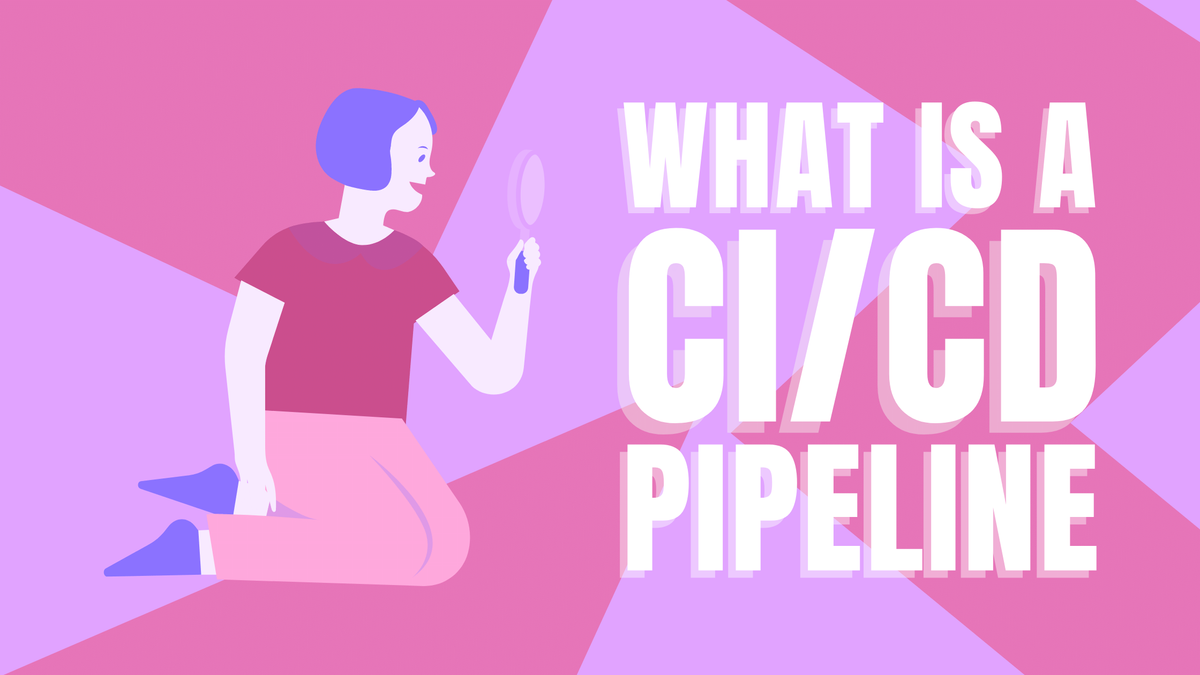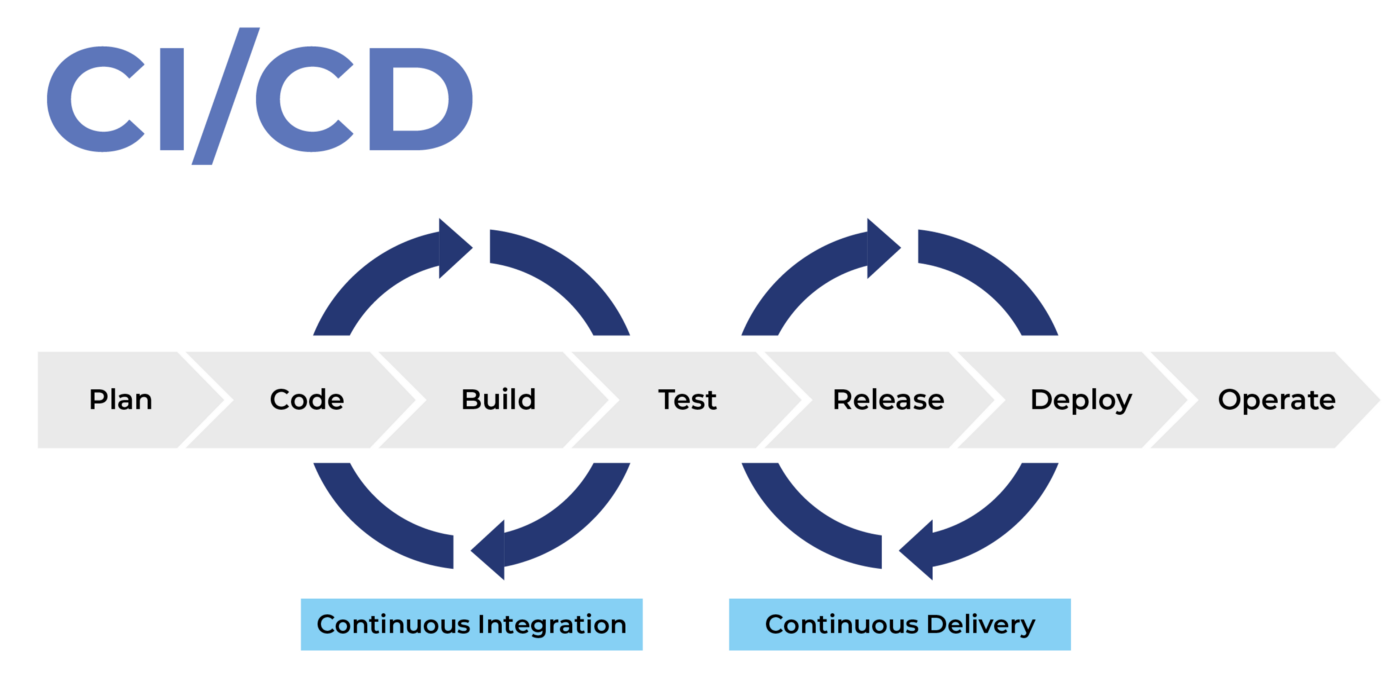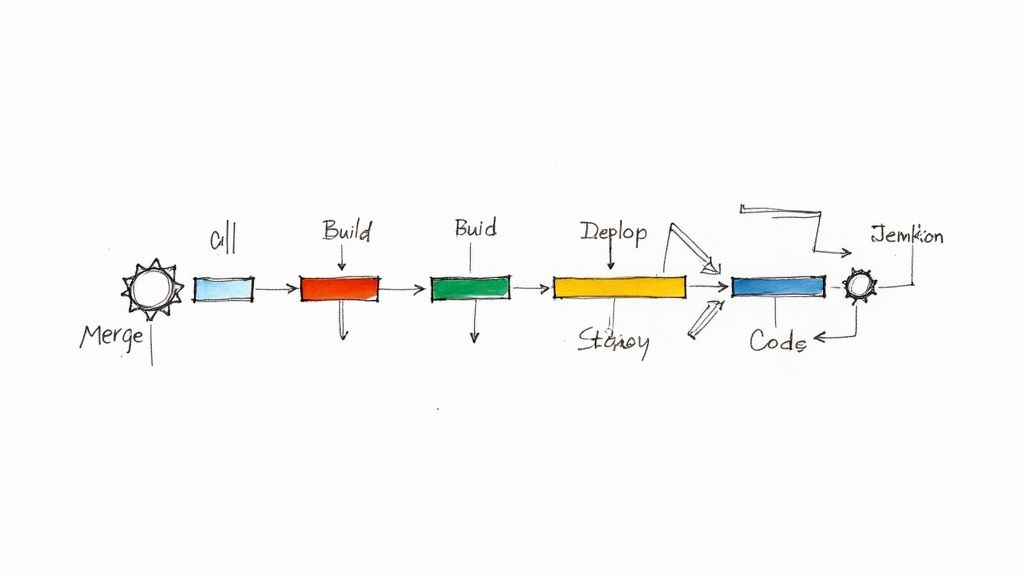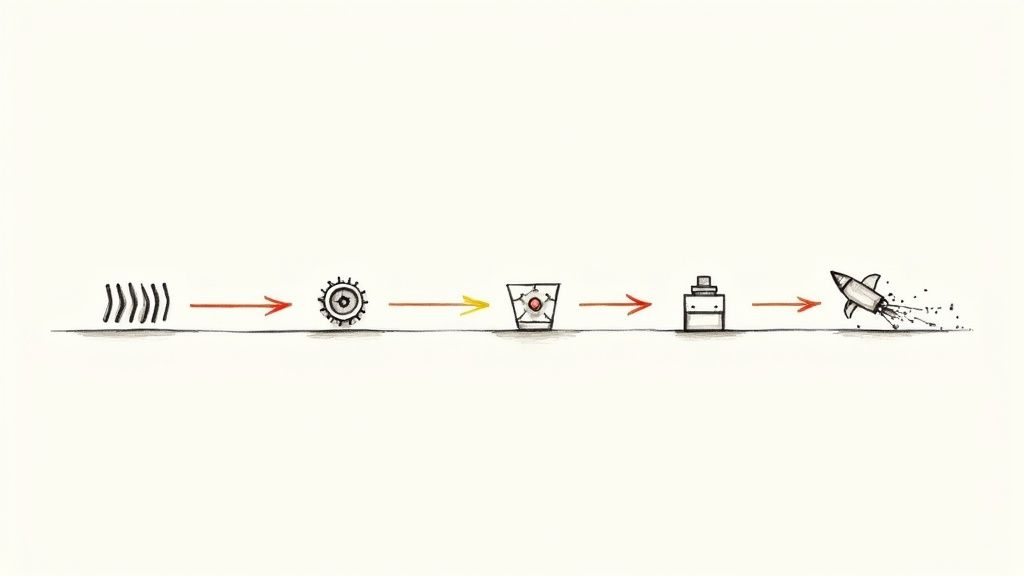What is a CI/CD pipeline?

Continuous integration (CI) and continuous delivery (CD) play an instrumental role in most modern software development processes, allowing teams to push critical changes and updates into production code without overlooking vulnerabilities. Both of these components of modern development workflows improve code quality while empowering teams to maintain a consistent release rate. CI/CD pipelines power this productivity boost by abstracting away the deeper logic of vetting code changes in real-time.
To get the most value out of your development efforts while adhering to continuous integration and delivery principles, you’ll definitely need to understand when and where CI/CD pipelines should be employed as well as how your team should go about setting them up. To start, though, it helps to have a solid understanding of CI and CD on their own.
What is CI/CD all about? 🧐
CI/CD is about building and maintaining software in a consistent, iterative manner. By leveraging both halves of this holistic approach to software production, your team can keep code quality in check and ensure only production-ready changes end up in end users' hands. Here is a quick look at the actual meanings of both of the processes that comprise CI/CD:

- Continuous integration: The CI in CI/CD focuses on all of the details involved in both building and testing code before it’s pushed to a production environment. Each change intended to be merged into your project's main branch or central repository in your chosen version control system—Git, etc.—is first subjected to a barrage of predefined tests in which source code is built and potential issues are sleuthed out.
- Continuous delivery/deployment: CD deals with the minutiae of pushing code to production environments after CI checks have been completed. Both continuous delivery and deployment are fairly closely linked to each other. Enough so, in fact, that they are used almost interchangeably in many circles. However, continuous delivery is meant to refer to code changes moving from a dev environment to a primary repository, whereas continuous deployment involves these changes moving all the way into a production environment.
What is a CI/CD pipeline? 🔍
A CI/CD pipeline arranges the processes defined above into a largely automated system. Code changes are keyed in by devs on your team, pushed through an automatic CI building and testing suite, then passed along to a continuous delivery implementation that simplifies the process of incorporating them into a production repository. Once there, your team's code changes can be pushed out into production automatically with the help of continuous deployment tools.

Essentially, your CI/CD pipeline is your team's full armory of integration, testing, delivery, and deployment tools configured in such a way that new code passes from one to the next sequentially until it reaches your end-user—all without allowing known errors or vulnerabilities to enter the mix. This makes everything faster for your developers, who will thank you for abstracting away the tedium of too many manual tests, checks, and reports.
Benefits of CI/CD pipelines 🎁
CI/CD pipelines do much more than merely automate tedious processes. In fact, more and more teams are turning to comprehensive pipelines as a means of adding implicit structure and sanity to their development workflow.
CI/CD pipelines smooth out the bumps that would otherwise arise between disparate teams contributing to a common project. Dev teams are free to focus on producing new features and maintaining existing ones, while QA (quality assurance) pros can pick apart potential issues that manage to escape the watchful eyes of their automated integration tests. Product teams can stay on top of the overall direction of the digital product itself without being bogged down in mind-numbing manual reviews.
Besides reducing friction between different teams involved in the development of a single product, a solid CI/CD pipeline can also help speed up development by encouraging teams to work with smaller, more incremental code releases. These small batches of code can be easier to manage and reason about as your codebase grows, making overlooked issues easier to roll back and patch up as needed.
CI/CD pipeline implementation tips ✅
Your CI/CD pipeline can drastically improve your development processes, but it’s only as effective as your team allows it to be. Here are a few tips to help refine your approach and derive the maximum benefit from your pipeline:
- Make sure your entire pipeline is properly secured against hacking threats and unauthorized use. Since your CI/CD pipeline could effectively usher submitted code changes into production environments, it is pivotal that you keep all of its endpoints under lock and key to protect your business and customers.
- Make seamless integration between CI/CD tools a priority. Right from the start, you should make sure that the tools you choose can be integrated alongside one another nicely, without forcing team members to manually patch up productivity-hogging gaps in functionality.
How Mergify can help 🥰
With Mergify, your team can optimize the merging process on GitHub and eliminate time-consuming manual merging tasks. Mergify lets your team automate everything from reviewer assignment to merge queueing and more. Request a demo today to start making code merges faster, safer, and simpler.






